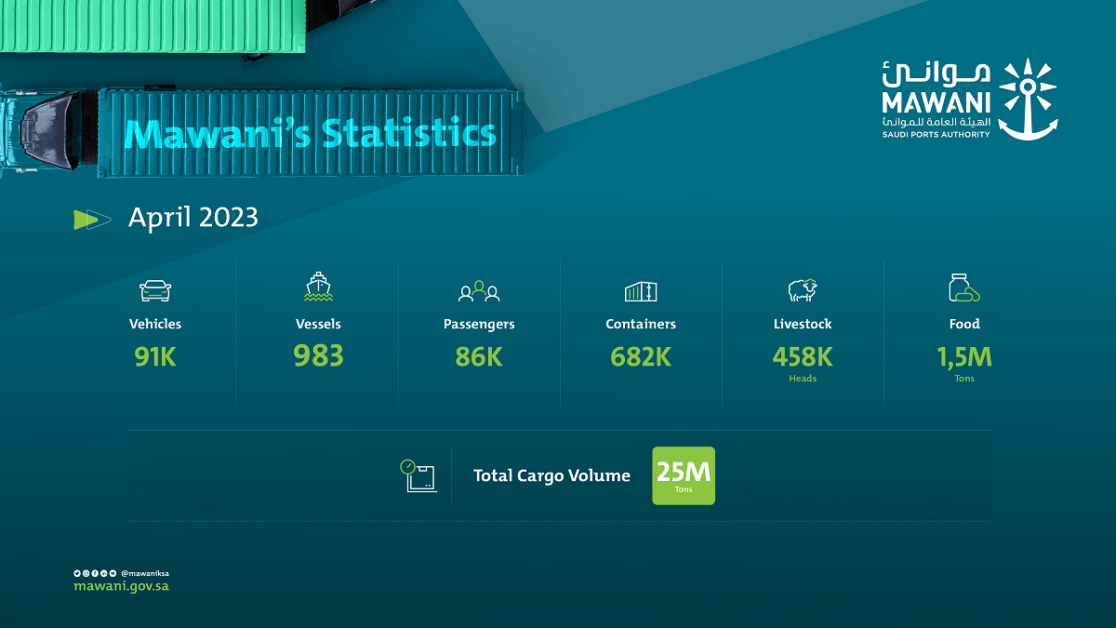Container data for last month further showed a 16.97% surge in exported volumes at 208,738 TEUs compared to 178,450 TEUs in the previous year. Imports, on the other hand, inched up 3.12% to 208,080 TEUs from 201,784 TEUs this year with transshipments scoring 264,845 TEUs in monthly quantity, a 19.73% increase from 221,195 TEUs in April 2022.
The national maritime regulator also revealed a 6.63% drop in cargo numbers at its ports, handling about 24,965,999 tons in contrast to 26,737,416 tons a year earlier. The total cargo count for April included around 543,496 tons of general cargo, 4,135,552 tons of dry bulk cargo, and 13,026,227 tons of liquid bulk cargo.
A similar decrease was also witnessed across the trade of food commodities with a 1.26% fall from 1,533,118 tons in 2022 to 1,513,729 tons in 2023. On the contrary, livestock figures climbed 2.63% from 446,539 to 458,280 cattle heads.
Automobile units passing through Mawani’s hubs in April 2023 were estimated at 91,083 vehicles, a sizable jump of 52.8% from the 2022 level of 59,608. This year-on-year growth figure was bettered only by last month’s passenger traffic, which recorded an impressive 122.64% leap from 38,706 pax to 86,175 pax. Besides hosting an increased flow of passengers, the Kingdom’s ports also accommodated 983 vessels across its berths last month, a marginal uptick of 3.69% from 2022’s total of 948 vessels. Following a robust approach set forth by the National Transport and Logistics Strategy (NTLS), the Saudi maritime sector is on track to establish a world-class logistics platform through the deployment of cutting-edge technologies that drives the Kingdom’s journey towards new horizons while leading the global charge towards sustainability.





